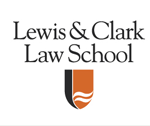(The Limits of) Judicial Resegregation
Document Type
Article
Publication Title
Harvard Civil Rights-Civil Liberties Law Review
Version
prepublication
Journal Abbreviation
Harv. C.R.-C.L. L. Rev.
Abstract
The past several decades have seen courts sharply turn against race-conscious integration measures. Doctrinally, this hostility has emerged through the ideology of color-blindness, which posits that—to the greatest extent possible—law should pay no heed to racial categories. Under this view, race-conscious efforts to integrate schools are morally and legally identical to race-conscious efforts to segregate schools—a position I term the colorblind equivalency principle. One narrow carveout to this principle flows out of Brown II and its progeny: race-conscious integration measures are permitted in response to prior racial discrimination. For the current Court, however, this sop to color-consciousness is justified not as a means of pursuing racial integration per se, but rather in order to restore the racial state of affairs to that which would have existed prior to the racially discriminatory violation. I term this the colorblind restoration principle. Together, these principles demarcate the core of contemporary equal protection jurisprudence on matters of racial discrimination.
However, combining the colorblind equivalency and restoration principles raises the alarming prospect that current Fourteenth Amendment doctrine may allow for or even demand judicially-mandated resegregation, as a parallel to earlier judicial decrees (following from Brown II) imposing judicially-mandated desegregation. Put simply, if the Supreme Court is correct in viewing all race-conscious measures as morally and legally equivalent, then the post-Brown race-conscious desegregation decrees also, as a conceptual matter, license race-conscious resegregation measures under certain circumstances—primarily, as a means of “remedying” the racially integrative effects of racial affirmative action and other like programs deemed unlawful under current doctrine.
From this disconcerting possibility I draw two conclusions. The first is conceptual and doctrinal: the current Fourteenth Amendment jurisprudence cannot both affirm the propriety of the Brown II line of desegregation cases while also disavowing the prospect of judicial resegregation. The unwillingness to jettison either of these positions, in turn, falsifies the colorblind equivalency principle—the insistence in affirming the validity of Brown II while disclaiming the legitimacy of judicial resegregation stems precisely from what the equivalency principle denies: the manifest, even obvious, distinction between using race to integrate and using race to segregate. The second conclusion is normative and prescriptive: the likely unwillingness of courts to endorse judicial resegregation is reflective of practical limits on the judiciary in seeking to impose its preferences on the public. The story of how segregationists historically “resisted” integration decrees by leveraging functional, doctrinal, and political limitations on judicial power is a well-told tale. Integrationists today, however, can draw on these same lessons to circumvent a hostile judiciary which nonetheless remains subject to institutional constraints limiting its ability to counteract sustained, creative resistance to its decrees from the political branches.
First Page
1
Last Page
45
Publication Date
1-1-2023
Recommended Citation
David H. Schraub,
(The Limits of) Judicial Resegregation,
58
Harv. C.R.-C.L. L. Rev.
1
(2023).
Available at:
https://lawcommons.lclark.edu/faculty_articles/251


Comments
Page numbering in the prepublication version of the article linked here differs from the final published article, which is numbered pp. 311-354.